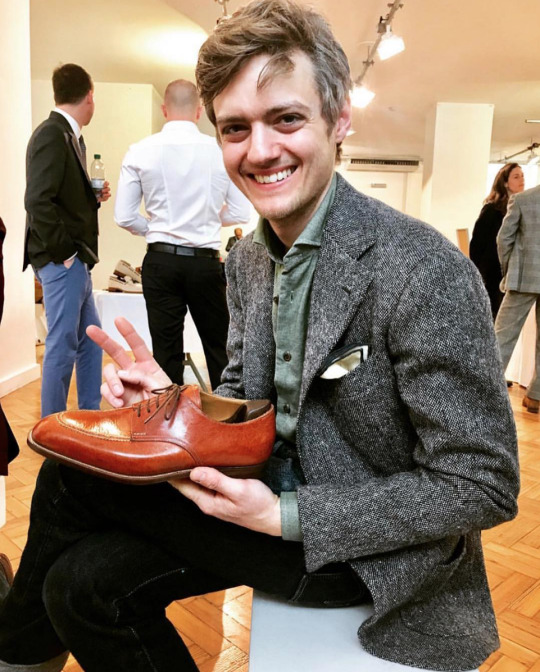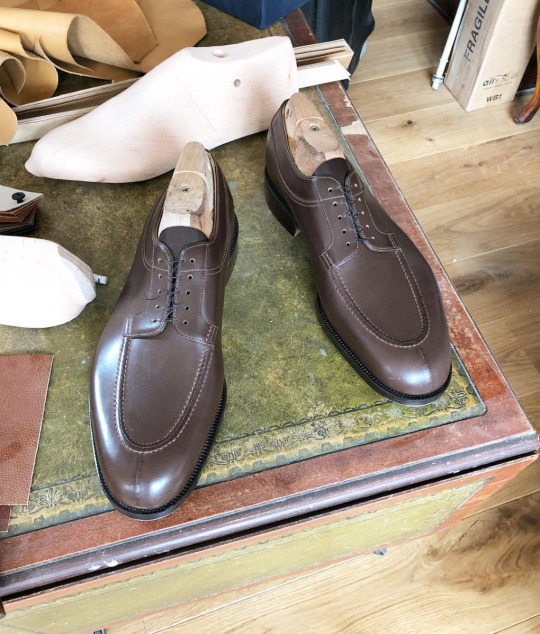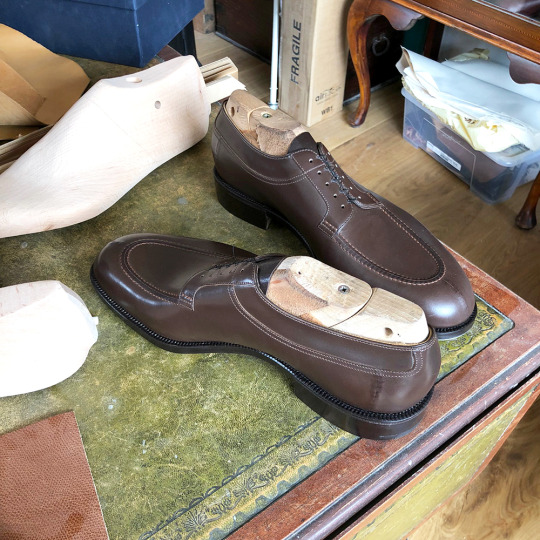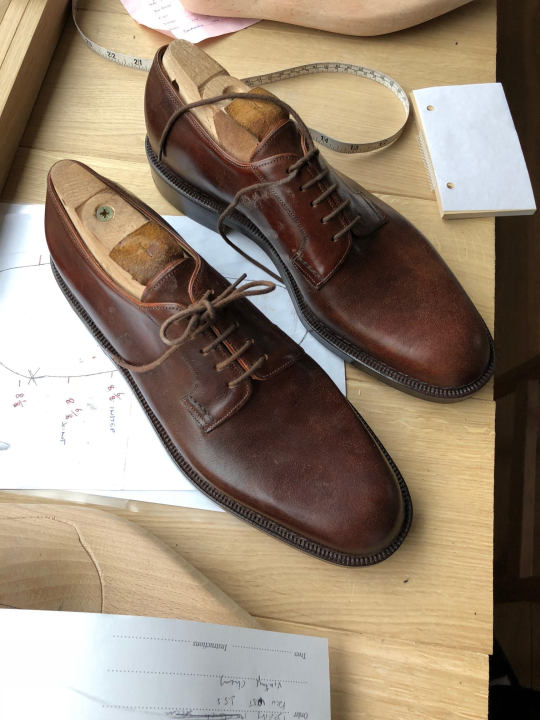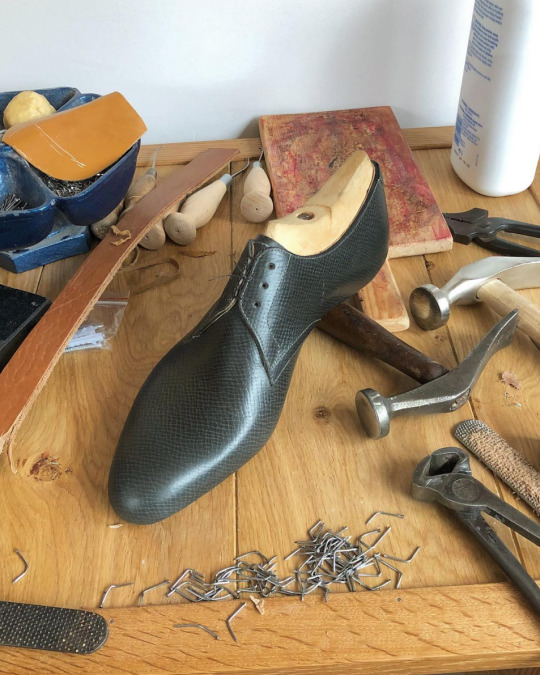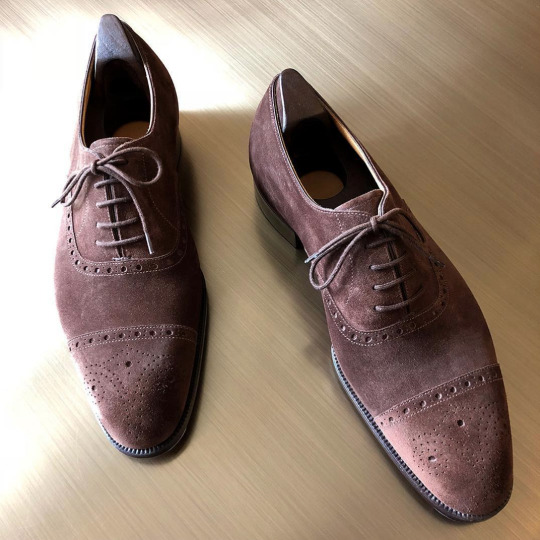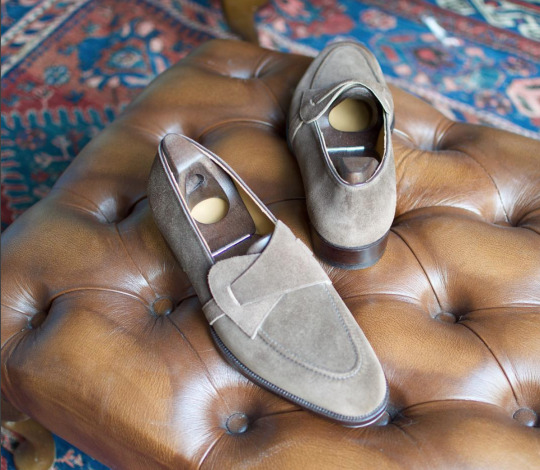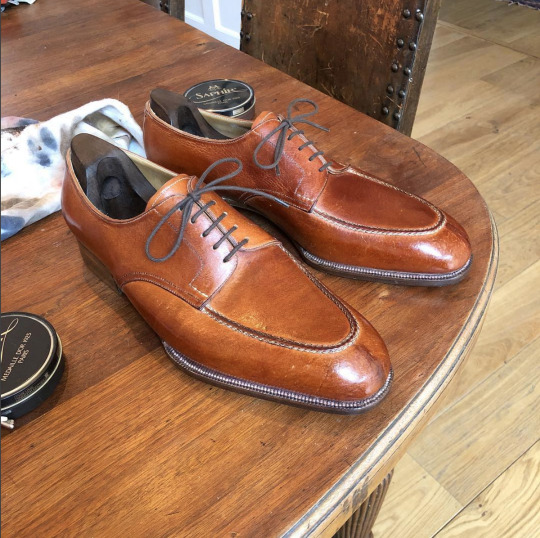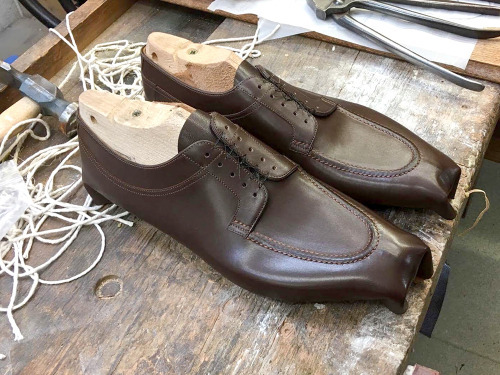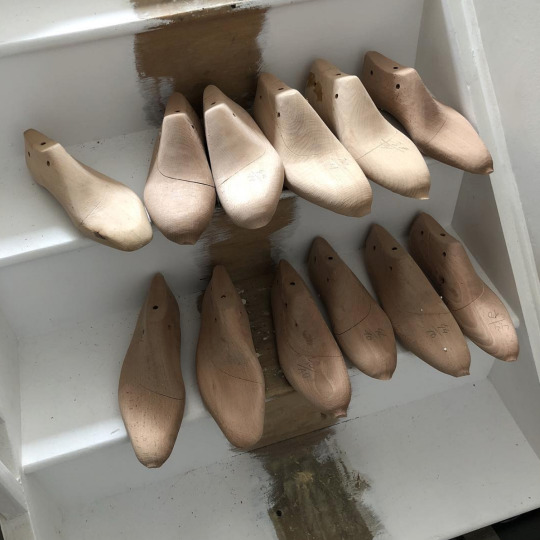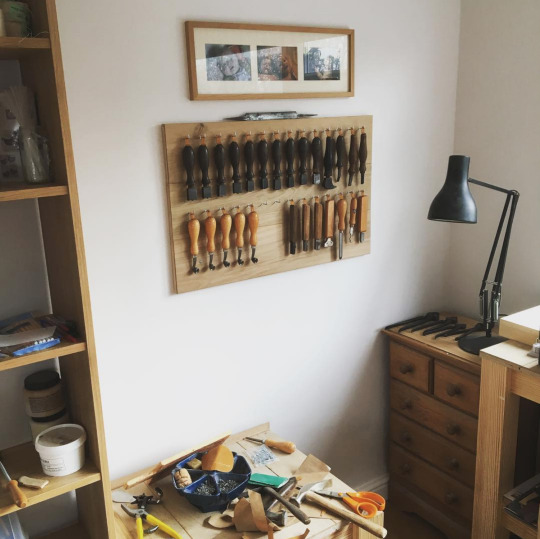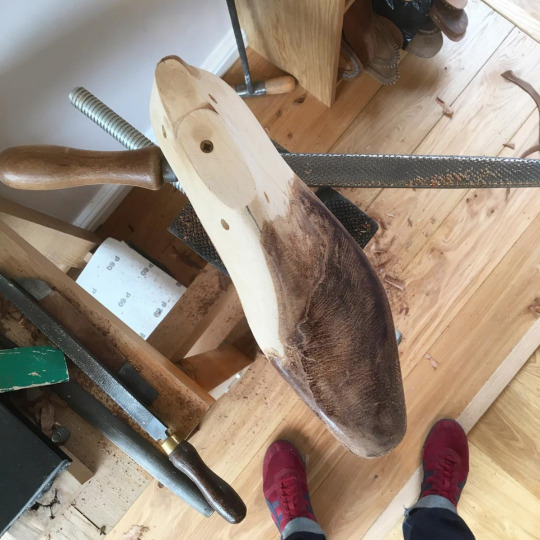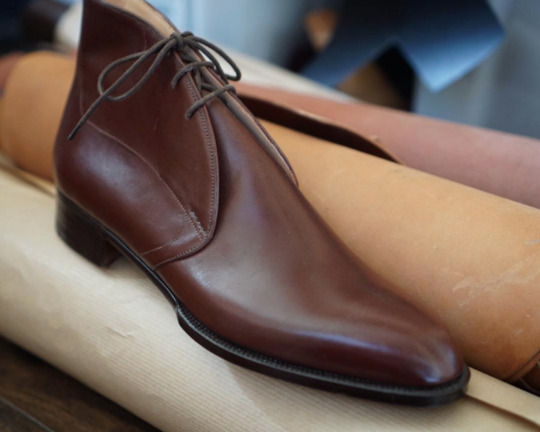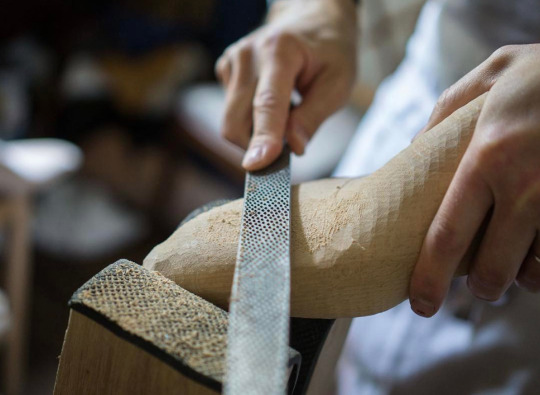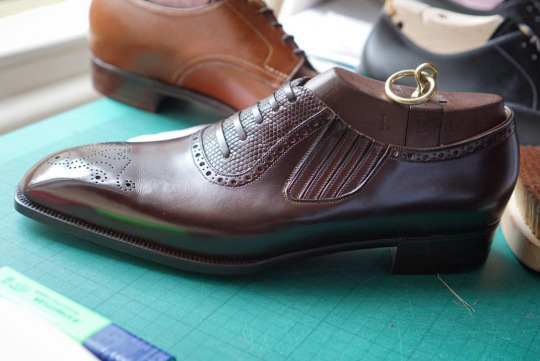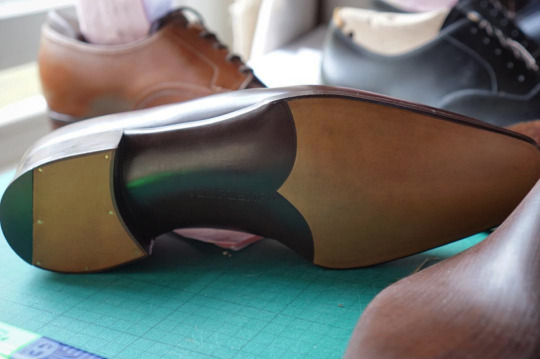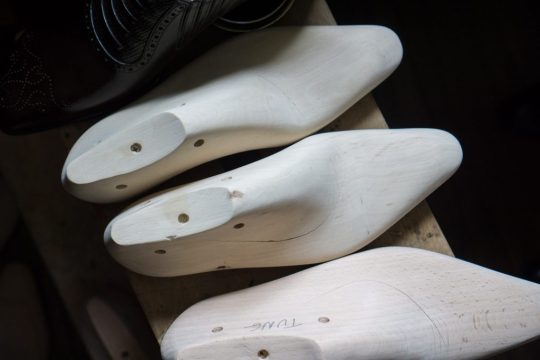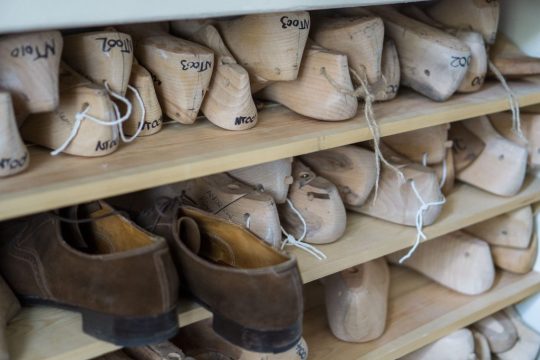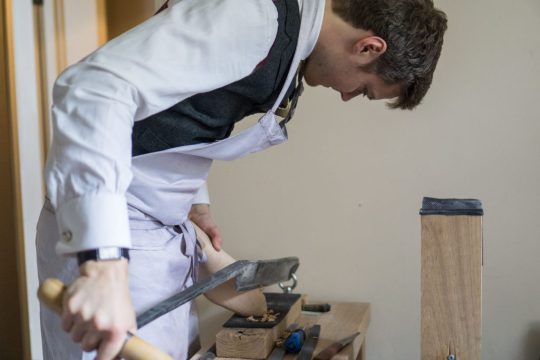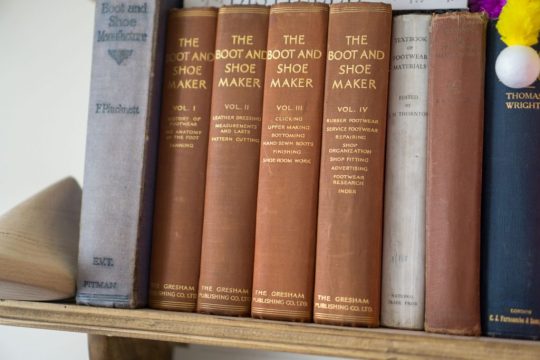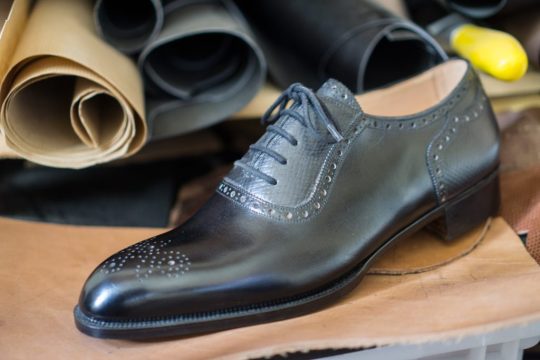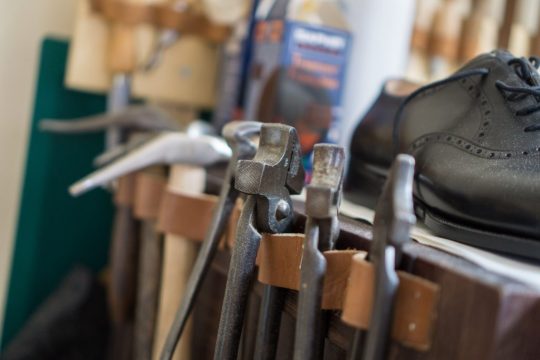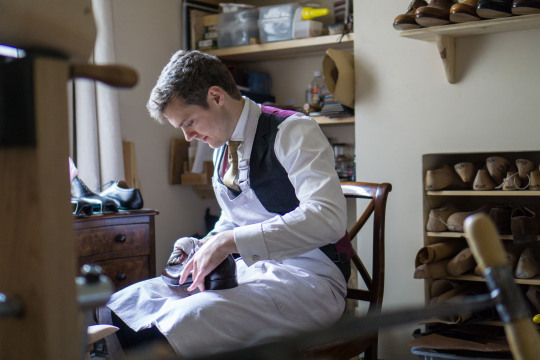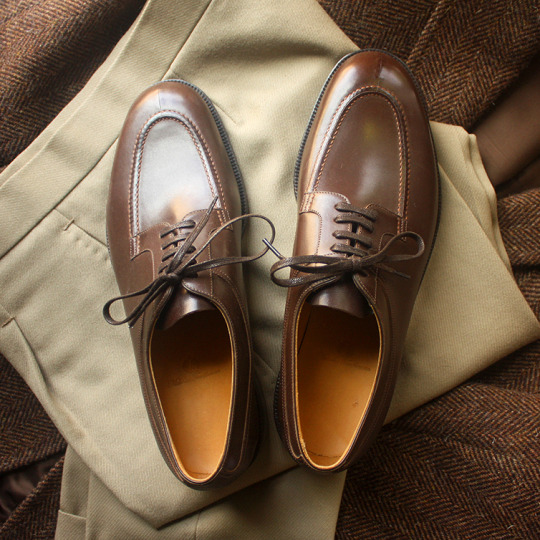
“Want to know if a man is well dressed? Look down.” So wrote George Frazier, author of The Art of Wearing Clothes, a 1960s Esquire article considered by many to be the best thing ever written on men’s style. Yet, while the market for custom clothing grows each year, it’s rare to see custom footwear (rumors are even swirling about one of the more prestigious firms being on the brink of bankruptcy). For men who get custom suits and sport coats, shoes are the last part of their wardrobe that gets rebuilt. In his book Acquired Tastes, Peter Mayle suggests it’s because bespoke shoes smack of excess, “more shameful than a passion for cashmere socks.” He wrote: “Unlike the miracles of disguise that a tailor has perform in order to camouflage bodily imperfections, the shoemaker’s task is simple. Feet are feet.”
I think he’s right, to a degree. As they say, God makes and the tailor shapes. It takes a skilled tailor to transform a two-dimensional piece of fabric into a three-dimensional form entirely different than your body (thankfully). Shoes, on the other hand, cocoon your feet like hard shells. So long as they don’t cut into your ankles, or fall off your feet, you’re fine. Aldens, for example, are built like empty Kleenex boxes. That’s partly why they’re so comfortable.
The benefits of moving from ready-to-wear to custom for footwear aren’t the same as they are for tailored clothing, but they exist. For one, a custom shoemaker can shape the shoes in a way that’s a bit sleeker and more refined than what you’ll find in stores. The waist can hug your arches better; the toe box slimmed in a way that’s flattering, while remaining comfortable. Simon Crompton has written about this before. And if you care about craft for its own sake – the only justifiable reason for these prices, I think – then there’s no real comparison.
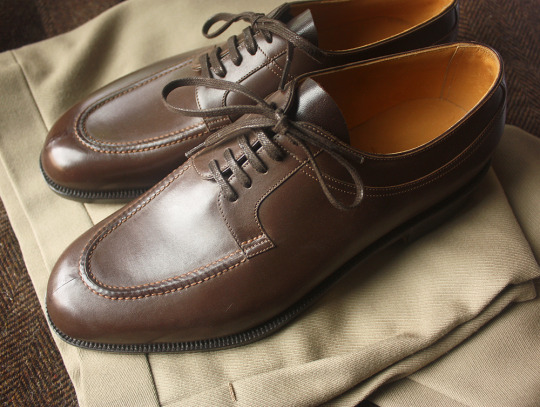

Another reason could be if you have a very particular idea for a shoe. For the last few years, I’ve wanted a rounder, more casual split-toe I can wear with sport coats – something closer to the style’s original spirit. The split-toe has a split history with two different stories about its origin. One says the design was first developed for fishermen in Norway, hence the term, the Norwegian split-toe. The other says they were originally worn by British navigational engineers, or navvies for short, at the turn of the century (John Lobb of St. James still calls the style a Navvy cut for this reason). Supposedly, these engineers wore split-toes while working on wet railways, canals, and roads. Who knows which origin story is true, but both point to the water-resistant nature of split-toes, which were made for practical and utilitarian purposes.
Most split-toe designs today are somewhat sleek, such as those from Edward Green or Saint Crispins. And those that are casual can sometimes look better under jeans than trousers. So I recently commissioned this pair of dark-brown split-toes from Nicholas Templeman, a lastmaker who trained at John Lobb Bootmaker before striking out on his own. When I first interviewed Nicholas a few years ago, I asked him what’s the hardest part of shoemaking. “Meeting the customer’s expectations,” he said. “Just because someone describes what they want doesn’t mean your idea is the same as theirs, so you have to work at it.” Among the people I’ve worked with for custom clothes, I haven’t found someone who pays as much attention to the details as Nicholas.
This pair was partly inspired by JM Weston’s hunt derby, so it features a few country-style details. There’s the square waist, which you’ll find on sporty shoes since they’re intended to seat the wearer more securely in horse stirrups. Then there’s the bellow tongue, which connects to the inside of the facings – a detail originally made to keep pig slop and rain from seeping inside of the shoes. Both of these details have their roots in workwear, although these shoes will only ever do the hard work of making me look good.
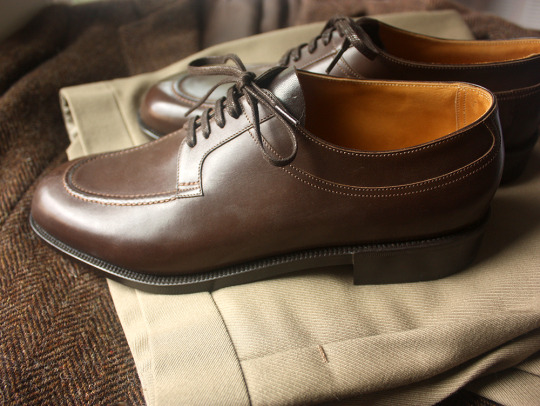
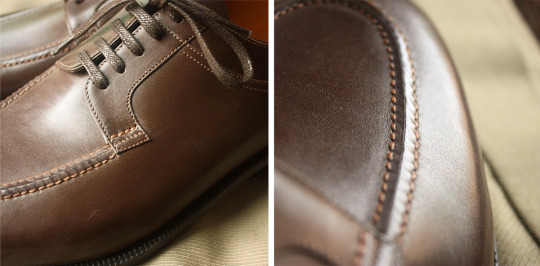
One of the challenges was getting the lake right. The Chasse is made with what’s known as a flat seam, where two pieces of leather are butted up against each other and then connected through a U-shaped stitch. Since the leather sits end-to-end, you don’t get the lip that forms on a raised lake (which was used on my first pair of bespoke shoes). Unfortunately, it’s also difficult to execute on a thinner piece of leather – the stitching just rips too easily. Anything thicker and you wind up with that massive, chunky silhouette you find on the Chasse, which I wanted to avoid.
Nicholas came up with the smart solution of doing a wholecut derby, which means the top of the shoe, what’s known as the vamp, is made from one continuous piece of leather. This allowed him to make an apron that looks like the one on the Chasse, but is purely decorative (the split you see at the top is just a score). Being a wholecut derby also meant the facings had to be made from separate pieces of leather, but I think you can barely tell, even if you look closely.
There are some other important details. The double row of stitching that sweeps back towards the quarters, giving the style a more casual feel. The sole that sticks out a bit more from the uppers, protecting them and giving the shoes some visual weight. And that generally rounded shape, which is what I wanted on this design. The shoes sit perfectly between town and country, formal and informal.


The one detail I didn’t expect was the side seam. That was done with a split-and-lift stitch, which is when the needle pierces the leather halfway and then tunnels through. It’s the same technique used for the split-toe seam (the stitches are on the other side of the leather, hidden beneath the surface). Nicholas said he thought a handsewn seam would be more inconspicuous than a machine-sewn one. He also offered to remake the shoes if I didn’t like the detail. I wasn’t sure about them at first, but they’ve since grown on me. A friend noted they distinguish the shoes from ready-to-wear.
This whole project has made me appreciate the value of working directly with a small, maker-run shop. Unlike with a larger house such as G.J. Cleverley, I’ve been able to work directly with Nicholas on details I think would mark me as a nuisance elsewhere. A friend of mine in Boston has bespoke shoes from every company imaginable – including each of the big West End firms to smaller makers around the world. When I asked him a couple of years ago where I should turn for my first pair of bespoke shoes, he said Nicholas Templeman. “You’ll get more individual attention,” he said. He was right. Plus, working directly with a lastmaker, rather than just a traveling sales rep, has meant that it’s been easier to communicate what I want from the last.
For those in the US, Nicholas tours here a few times a year, hosting trunk shows. He’s currently in NYC and will be in San Francisco this weekend. Even if you’re on the fence about ordering, I encourage you to stop by. Nicholas is friendly and down-to-earth, and doesn’t have a pushy salesman vibe – he’s just happy to talk about shoes. You can also follow him on Instagram and find his tour schedule on his website.
(Photos via Nicholas Templeman, Gaz, Voxsartoria, Shoegazing, Manolo, and me)
